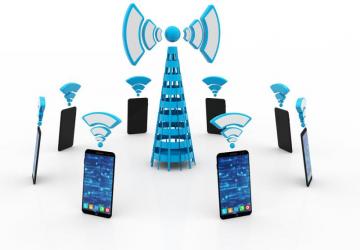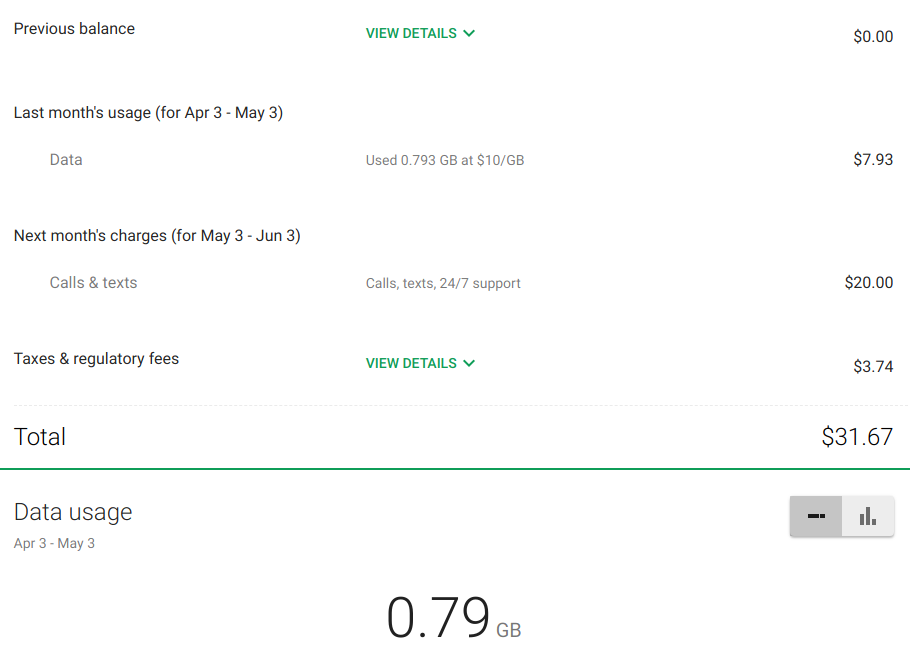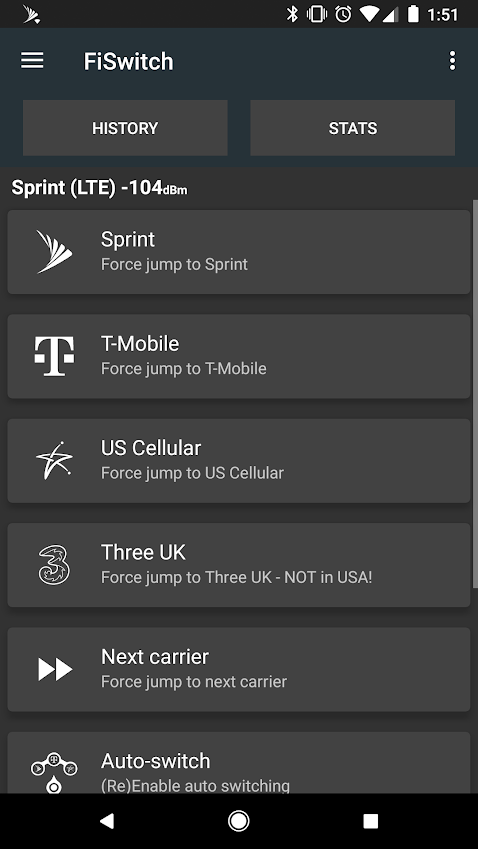A Look at Google's Project Fi

Google's Project Fi is a great cell-phone service, but the data-only SIMs make it incredible for network projects!
I have a lot of cell phones. I have iPhones (old and new), Android phones (old, new, very old and funny-shaped), and I have a few legacy phones that aren't either Android or iPhone. Remember Maemo? Yeah, and I still have one of those old Nokia phones somewhere too. Admittedly, part of the reason I have such a collection is that I tend to hoard nostalgic technology, but part of it is practical too.
I've used phones as IP cameras for BirdTopia (my recorded and streamed bird-feeder collection). I've created WiFi-only audiobook devices that I use when I'm out and about. I've used old phones as SONOS remotes, Plex players, Chromecast initiators and countless other tasks that tiny little computers are perfect for doing. One of the frustrating things about using old cell phones for projects like that though is they only have WiFi access, because adding multiple devices to a cell plan becomes expensive quickly. That's not the case anymore, however, thanks to Google's Project Fi.
Most people love Project Fi because of the tower-hopping features or because of the fair pricing. I like those features too, but the real bonus for me is the "data only" SIM option. Like most people, I rarely make phone calls anymore, and there are so many chat apps, texting isn't very important either. With most cell-phone plans, there's an "access" fee per line. With Project Fi, additional devices don't cost anything more! (But, more about that later.) The Project Fi experience is worth investigating.
What's the Deal?
Project Fi is a play on the term "WiFi" and is pronounced "Project Fye", as opposed to "Project Fee", which is what I called it at first. Several features set Project Fi apart from other cell-phone plans.
First, Project Fi uses towers from three carriers: T-Mobile, US Cellular and Sprint. When using supported hardware, Project Fi constantly monitors signal strength and seamlessly transitions between the various towers. Depending on where you live, this can mean constant access to the fastest network or a better chance of having any coverage at all. (I'm in the latter group, as I live in a rural area.)
The second standout feature of Project Fi is the pricing model. Every phone pays a $20/month fee for unlimited calls and texts. On top of that, all phones and devices share a data pool that costs $10/GB. The data cost isn't remarkably low, but Google handles it very well. I recently discovered that it's not billed in full $10 increments (Figure 1). If you use 10.01GB of data, you pay $10.01, not $20.

Figure 1. This amount of data would be expensive on a traditional plan, but with Project Fi, it's affordable.
The least talked about, but perhaps most interesting, feature of Project Fi is that you can order data-only SIM cards that share data with the larger plan. Those SIMs come with no additional monthly fee, plus they don't cost anything for activation.
Devices
One downside of using Project Fi is that only a handful of phones are supported. There are workarounds for non-supported phones, but the "magic" of Project Fi is the tower-hopping feature, and for that, only certain phones qualify. At the time of this writing, the following phones are compatible:
- Pixel 2
- Pixel 2 XL
- Pixel
- Pixel XL
- Moto X4
- Nexus 5X
- Nexus 6P
- Nexus 6
Most of the phones on the list aren't currently being manufactured, but you can find refurbished ones. I personally opted for the Pixel 2, and it's easily the nicest Android device I've ever owned. I could write a separate review on the Pixel 2, but plenty of reviews already exist. The only not-well-known downside to the Pixel 2 is that the camera app, although awesome, doesn't support external microphones, which makes shooting YouTube videos more difficult.
I mentioned that although only a certain number of devices are officially supported, other phones do technically work. Really, most GSM-capable phones with SIM cards will function; they just lose the automatic tower-hopping and will be stuck on T-Mobile. Unfortunately, a SIM can't be activated on a non-compatible device, so you'll need to activate it on someone's Pixel/Nexus, and then swap the SIM to your phone. To add insult to injury, then the Pixel/Nexus that activated the SIM for you can't be used on Project Fi because it's tied to the SIM. That said, if you want more SIMs...read on.
The Magical SIM Cards
Google will let you purchase data-only SIM cards that share the data on your plan. Actually, you can purchase up to nine data-only SIM cards and use them on as many devices as you want. There's no additional monthly cost for a data-only SIM, and in the mostly data world we live in, it could mean an extremely affordable way to get cell phones for kids. If I look on my current cell-phone plan, my kids almost never use actual minutes, and although they do text, there are alternative ways to text that don't require a phone number.
One unfortunate part of the data-only SIM is that it doesn't tower-hop—not even manually. Although the data-only SIM cards share a data plan, they utilize only T-Mobile towers for access. In my area, that's not an issue, because T-Mobile has the best coverage with the fastest speed. It potentially could be a problem for someone in a T-Mobile dead zone.
I can tell you that being able to add cellular data to any device without incurring an additional monthly charge has been incredible. I find myself doing projects with old phones and tablets that I never would have considered. Here are a few examples:
- Permanent dash-mounted cell phone for Android Auto.
- Trail-cam with remote access.
- BirdCam on remote bird feeders.
- Loner phones for international guests (or SIMs for their own devices).
It doesn't get much press, but the data-only SIM with Project Fi is the reason I tried it in the first place. Project Fi doesn't have truly unlimited data (well, not useful unlimited), but the data-only SIM is great for most projects. It's been fun for me, because I've actually installed mobile data into devices that I never intended to do so. A Chromebook, for instance, that has a SIM slot was able to get mobile data, which I'd never even considered trying before.
The Pricing Magic and the Catch
I mentioned that Project Fi charges only for the data you use. That's true, but it gets even better. After 6GB, the "Bill Protection" kicks in, and no additional charges are incurred for the current month. That means the maximum a person with one phone and up to nine SIM cards will pay is $80/month. You do need at least one phone on the plan, but it means an entire family could have cell service (using data SIMs) for $80/month or less.
The big "gotcha" that I didn't realize at first was that although there is no additional charge for data over 6GB, each device is soft-capped at 15GB of data. The data doesn't technically stop, but it is throttled down to something like 256k. That's enough for sending email, but not much else. 15GB per device is actually quite generous, but it does mean Project Fi isn't a good solution for replacing a home internet connection. Perhaps that's the reason there's a cap, because otherwise, an entire neighborhood could share data SIMs and use Project Fi as its ISP! Also, a data SIM shares data, so it's considered the same "device" as the phone. That means (as far as I can tell) that once one of your SIMs or phones reaches 15GB, all of them get throttled to 256k. If you have another phone on the plan, supposedly it still will function at full speed until it reaches 15GB, but I haven't tested that.
If you don't use much data, Project Fi is an incredible deal. If you have lots of projects in which you'd like to use data SIMs, Project Fi is, again, an incredible deal. However, if you're the type of user who regularly uses more than 15GB in a month (that is, not often on WiFi), Project Fi might not be ideal. In fact, if you use 4–5GB per month regularly, there are plans from places like Red Pocket that cost $30/month and include unlimited calls and texts with 5GB of data. With a single phone, that usage would cost $70 on Project Fi. The moral of the story is, it's important to understand your usage, because what might be an incredible deal for one person will end up being highway robbery for another. This month, I've used 0.12GB of data on my phone and SIMs combined. That means for all those devices, I'll pay only a little more than $21! That's really small usage, however, and I know it. (My work-provided phone has many GB of usage this month.)
Making It Work
If you have a compatible device, getting Project Fi working is a no-brainer. If you have a different device, as I already mentioned, you'll need to activate the service on a compatible device and then swap the SIM into your Android (or even iPhone). You should be able to get calling, texting and data to work, but it only can use the T-Mobile towers like the data-only SIMs do. And at the time of this writing, the compatible device used to activate the SIM can't be used on Project Fi because its IMEI number is tied to the account.
If you do have a compatible device, it's possible to force a specific tower using dialer codes. Apps like FiSwitch will enter the dial codes automatically for changing towers and will give you an icon in the notification area to show you which tower you're currently using. I've found automatic switching to be pretty reliable, but manually switching is fun to watch.

Figure 2. I thought I'd use the manual switching more often than I do, but the information in the notification area regarding which tower you're currently using is nice.
Project Fi, for Me and Mine?
Project Fi is a revolutionary cell service that makes really good sense for some cases. Kyle Rankin first turned me on to Project Fi, and it has saved his family a lot of money. They don't use a lot of data, so the price is lower than other options, plus they get the cool tower-hopping feature. For my purposes, the data-only SIMs really sold the package. Oddly, the plan wouldn't be good for me and my family, because we use far too much data on a monthly basis. But for fun projects and old cell phones, Project Fi has been awesome.
I encourage you to examine your recent cell-phone bills and figure out if Project Fi would make financial sense. If your usage is like the Rankin family's, it could save you a ton of money. Or if you want to put data in a bunch of devices without paying per device, the data-only SIMs might be worth the cost. The bill is paid monthly, so there's no worry about long-term commitments. Payment is handled via Google Pay, just like apps purchased from the Google Play store. It's so simple—if you have a compatible device, you might want to try it just for fun.
If you do get Project Fi and use the data SIMs for projects, please write in, I'd love to hear about them!










